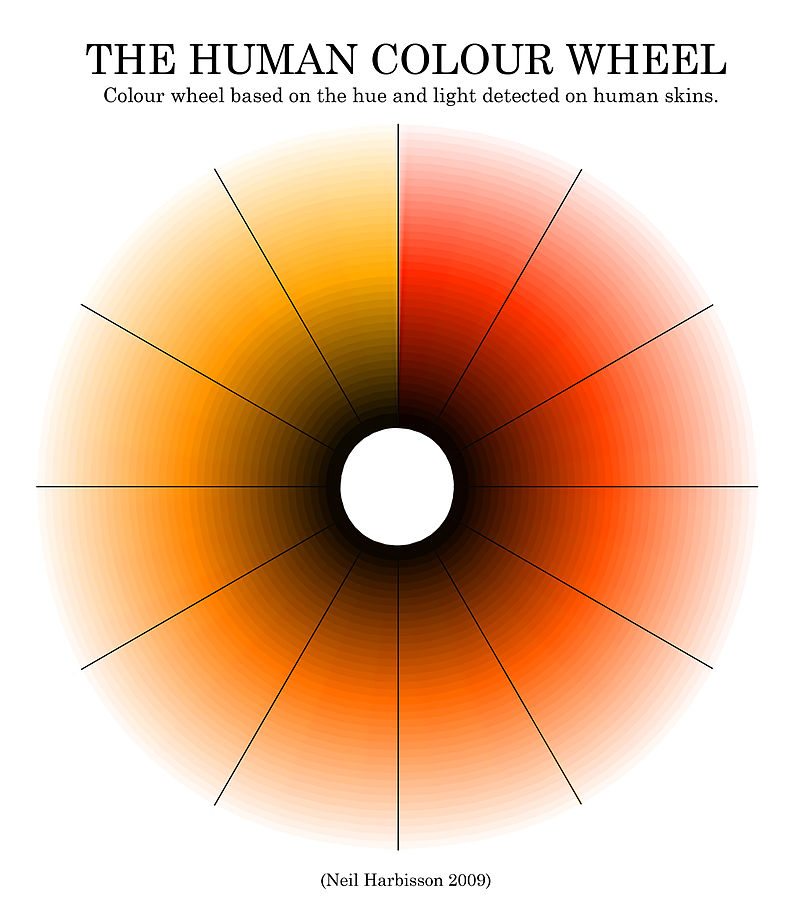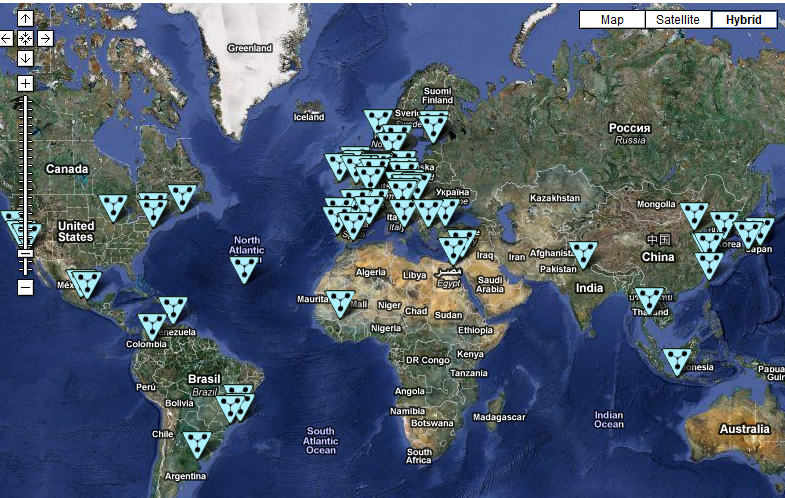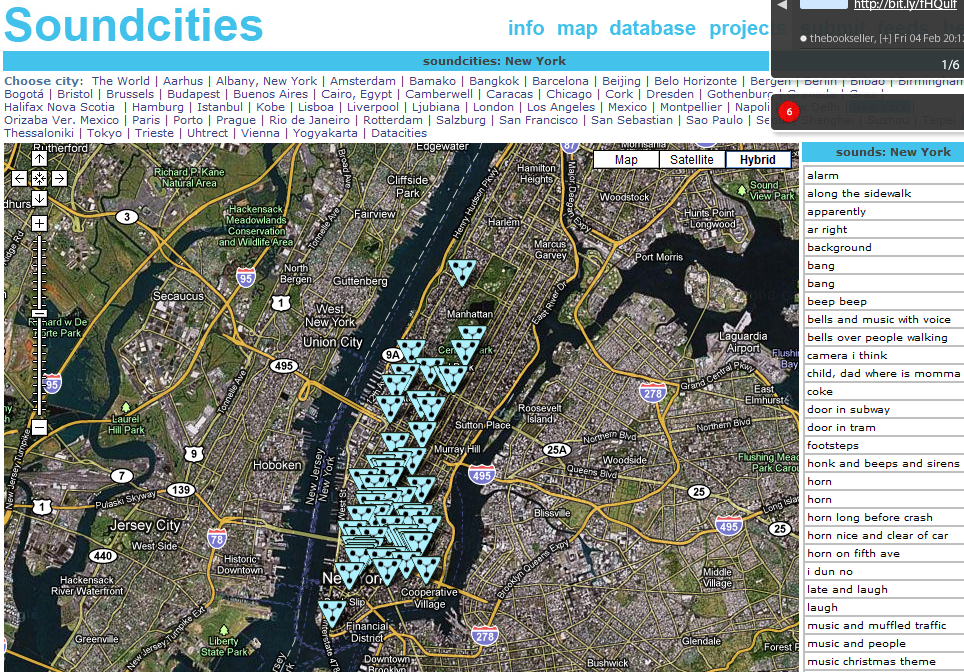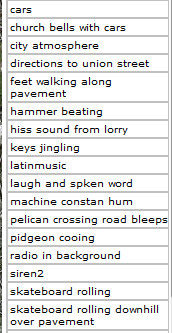The life of Neil Harbisson is like something out of a sci-fi novel. Neil was born with achromatopsia, a rare condition that leaves 1 in 30,000 people completely colorblind. But Neil isn’t colorblind, far from it. After convincing his doctors to implant an antenna onto him, Neil now possesses a new sense – the ability to hear colors. Neil takes you through a day in his life and you into an entirely new world.

The Human Colour Wheel
A color wheel based on the hue and light that Harbisson detected on human skins from 2004 to 2009.[44] Harbisson states that humans are not black or white, humans are orange. Human skins range from very light to very dark shades of orange-red to orange-yellow.[86] (Source: Wikipedia)
I’ve also pulled some of what Neil talks about in the TED talk video):
(This is paraphrased, not word for word:)
At first I had to memorise the names you give each colour, had to memorise the notes, but after some time this became a perception and then a feeling, and I started to have favourite colours and to dream in colour. I felt that the software and my brain had united then. In my dreams it was my brain creating the electronic sounds. I started to feel like a cyborg. I felt that the cybernetic device became a part of my body, an extension of my senses and finally part of my official image.
Life has changed dramatically since I have been able to hear colour. I can listen to a Picasso. Going to a supermarket is like going to a nightclub, full of different melodies especially the aisle of cleaning colours.
I used to dress the way that looked good, now I dress so it sounds good. Today I’m dressed in C major.
The way I look at food has changed. Now I can display my food on my plate so I can hear my favourite song.
The way I perceive beauty has changed. When I look at someone I hear their face. They might look beautiful but sound terrible. I create sound portraits.
I started having a secondary effect. Normal sound started to have colour. I started to paint music and paint people’s voices.
There are many colours around us that we cannot perceive. Now I can hear colours that the human eye cannot perceive, eg infra red and ultra violet.
Knowledge comes from our senses so if we extend our senses we will extend our knowledge. We should start creating applications for our own body. Which senses would you like to extend? Become a cyborg.
What does this say about our perception? Are we programmed to perceive one way which is actually not the only way?
If there are no black or white people, just shades of orange, then what is our perception of race based on? What about our perception of privilege?
Harbisson mixes up our perception of perception. He tells people how they sound by looking at them. He can listen to a Picasso. He can paint speeches in colour.
Which senses would you like to extend? Become a cyborg.
No thanks, Neil. But thanks for the perceptual mashup.



